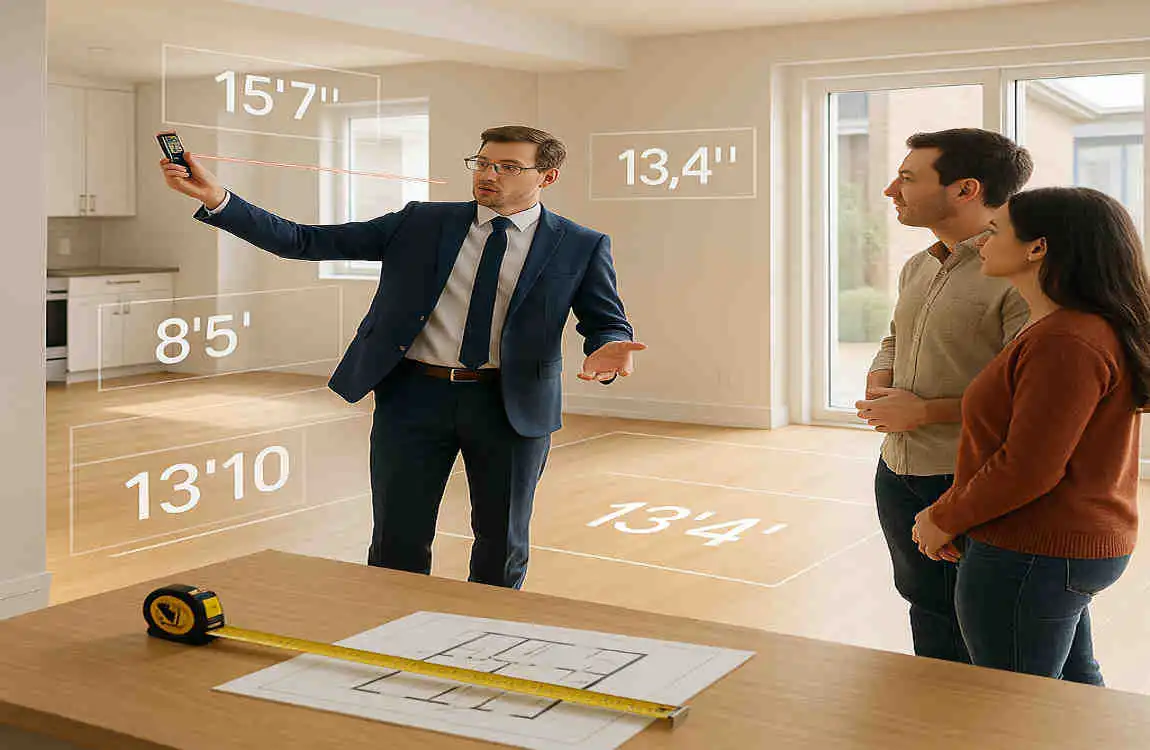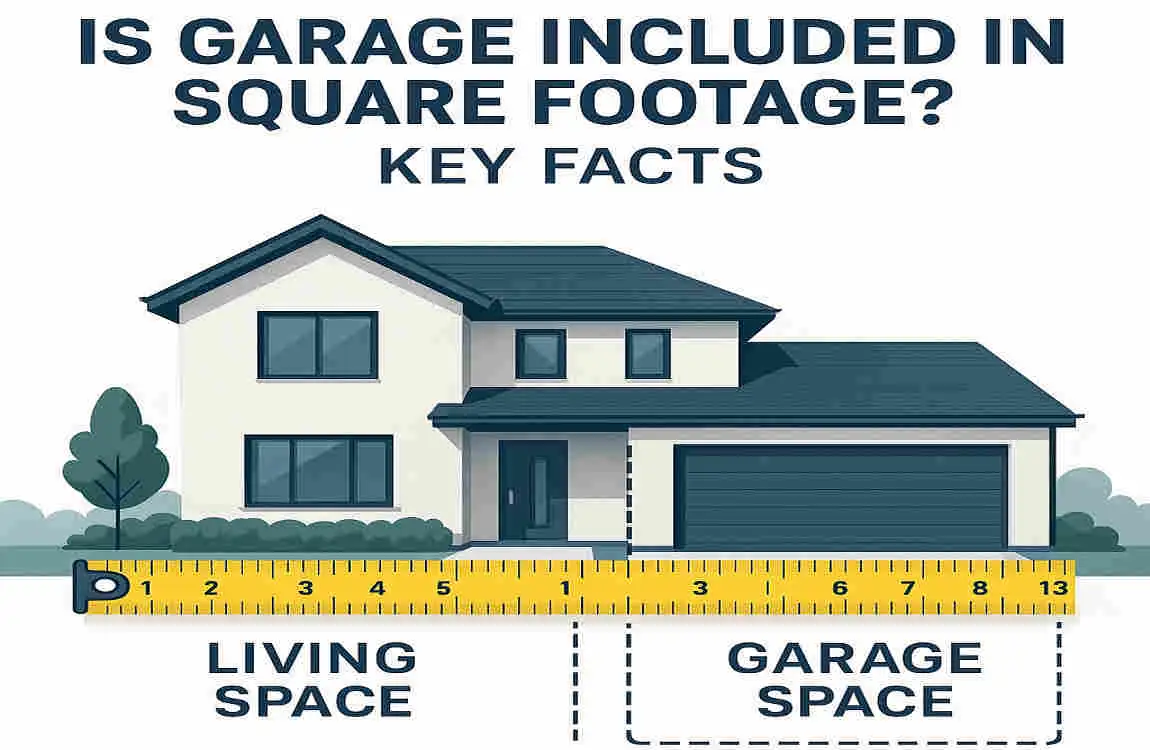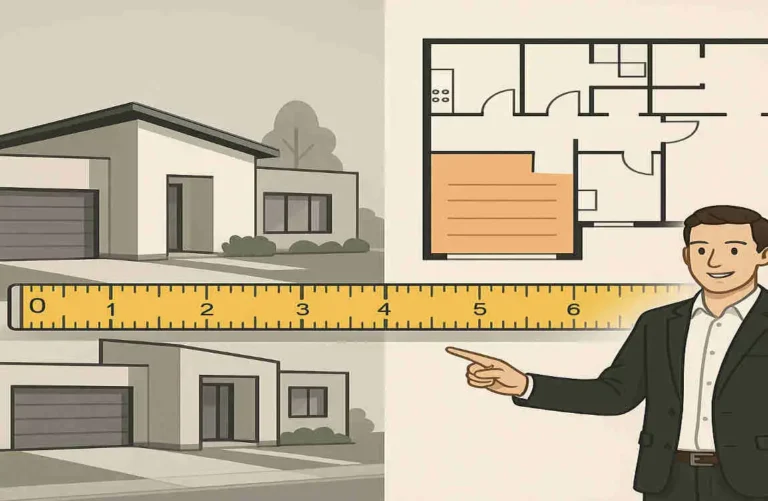When buying or selling a home, understanding the square footage is crucial. It’s one of the key factors that influence a property’s market value and can significantly impact your decision-making process. However, there’s often confusion about whether a garage is included in a home’s square footage.
Understanding Square Footage in Real Estate

What is Square Footage?
Square footage garage, in the context of residential real estate, refers to the total area of a home’s living space. It’s typically measured in square feet and represents the total area of all habitable rooms and areas.
Measuring Living Area vs. Total Area
When calculating square footage, it’s important to distinguish between the living area and the total area of a property. The living area includes all finished rooms and spaces suitable for everyday living, such as bedrooms, living rooms, kitchens, and bathrooms. On the other hand, the total area may include additional spaces such as garages, basements, and outdoor areas.
Importance of Accurate Square Footage
Accurate square footage is crucial for determining a home’s market value and appraisal. It serves as a key metric for comparing properties and assessing their worth. Real estate agents, appraisers, and buyers all rely on precise measurements to make informed decisions.
Common Standards for Measurement
To ensure consistency and accuracy, the real estate industry follows specific standards for measuring square footage. Two widely recognized guidelines are the American National Standards Institute (ANSI) and the Multiple Listing Service (MLS) guidelines. These standards provide a framework for measuring and reporting a home’s living area, helping to minimize discrepancies and confusion.
The Role of the Garage in Home Measurements
What Does a Garage Typically Include?
A garage is a structure designed to house vehicles and store various items. It can be either attached to the main house or detached as a standalone building. Attached garages are usually connected to the home by a common wall, while detached garages are separate structures located on the property.
Habitable Living Space vs. Garage Space
When measuring a home’s square footage, it’s essential to distinguish between habitable living space and garage space. Habitable living space refers to the areas of a house that are finished and suitable for daily living, such as bedrooms and living rooms. In contrast, garage space is typically considered non-habitable and is used primarily for parking vehicles and storage.
Why Garages Are Often Excluded
Garages are often excluded from a home’s official living square footage because they are not considered part of the habitable living space. The primary purpose of a garage is to provide shelter for vehicles and storage, rather than serving as a living area. As a result, most appraisal standards and real estate guidelines do not include garage space in the calculation of a home’s living area.
When Garages Might Be Considered Differently
While garages are typically excluded from living square footage, there are exceptions where they may be treated differently. For example, if a garage has been converted into a living space, such as an additional bedroom or office, it may be included in the home’s square footage. Additionally, some real estate listings may report garage space separately, especially if it has been finished or has unique features.
Is Garage Included in Square Footage? Key Facts

The Direct Answer
To answer the question directly: usually, garages are not included in a home’s official living square footage. This is the standard practice followed by most real estate agents, appraisers, and listing platforms.
Appraisal Standards Excluding Garages
The exclusion of garages from living square footage is supported by various appraisal standards, including those set by the American National Standards Institute (ANSI). These standards provide guidelines for measuring and reporting a home’s living area, and they specifically state that garages should not be included in the calculation.
Exceptions and Separate Reporting
While garages are typically excluded from living square footage, there are exceptions in which they may be reported separately. Some real estate listings may include garage space as an additional feature, especially if it has been finished or has unique features. However, this separate reporting is not the same as including the garage in the home’s official living square footage.
Regional Differences and Local Regulations
It’s worth noting that regional differences and local regulations can impact how garages are treated in square footage calculations. Some areas may have specific guidelines or practices that differ from the standard exclusion of garages. It’s always a good idea to familiarize yourself with the local real estate market and any relevant regulations when buying or selling a home.
Impact on Listing Descriptions, Pricing, and Buyer Expectations
Excluding garages from living square footage can significantly affect listing descriptions, pricing, and buyer expectations. When a home’s square footage is reported without including the garage, it’s essential to clearly disclose this information to avoid any misunderstandings. Buyers should be aware that the reported square footage represents the living area only and does not include the garage space.
Identifying Garage Inclusion or Exclusion
To determine whether a garage is included in a home’s square footage, carefully review the listing description and any accompanying documentation. Look for clear statements about the square footage and whether it includes or excludes the garage. If you’re unsure, don’t hesitate to ask the real estate agent or seller for clarification.
Implications for Buyers and Sellers
Why Buyers Should Verify Garage Space
For buyers, it’s crucial to verify whether the garage space is part of the reported square footage. This information can impact your perception of the home’s value and size. If you’re considering a property with a large garage, you’ll want to ensure you don’t mistakenly include that space in your assessment of the home’s living area.
Effect on Home Value Perception and Mortgage Financing
The inclusion or exclusion of a garage in a home’s square footage can also affect how buyers perceive the property’s value. A larger reported square footage may lead to higher expectations and a perceived higher value, even if the garage is not part of the living space. Additionally, mortgage financing may be influenced by the reported square footage, as lenders often use this information to assess the property’s worth and determine loan amounts.
Disclosure for Sellers
Sellers have a responsibility to clearly disclose whether the garage space is included or excluded from the reported square footage. Transparency is key to avoiding any potential misunderstandings or disputes during the transaction process. By providing accurate and detailed information about the home’s living area and garage space, sellers can build trust with potential buyers and facilitate a smoother sale.
Highlighting Garage Features Without Inflating Square Footage
While sellers should not include the garage in the reported square footage, they can still highlight the garage’s features and benefits as a selling point. Emphasize the size, amenities, and potential uses of the garage space to showcase its value to potential buyers. By focusing on the garage’s unique attributes rather than inflating the square footage, sellers can effectively market the property without misrepresenting the living area.
Using Garage Space as a Selling Point
Even if the garage is not included in the official square footage, it can still be a valuable selling point for a home. Buyers often appreciate the convenience and added storage space that a garage provides. Highlight the garage’s potential for parking multiple vehicles, storing outdoor equipment, or even serving as a workshop or hobby area. By emphasizing the practical benefits of the garage, sellers can attract buyers who value this feature.
Measuring Your Garage and Home Space Accurately
Practical Tips for Measuring
To ensure accurate measurements of your garage and home space, follow these practical tips:
- Use a reliable measuring tool, such as a tape measure or laser distance measurer.
- Measure each room and space separately, including the garage.
- Record the measurements clearly and in an organized manner.
- Double-check your measurements to minimize errors.
Professional Services for Precise Measurement
For the most accurate measurements, consider hiring professional services such as appraisers or surveyors. These experts have the knowledge, tools, and experience to precisely measure your home and garage space. They can provide you with a detailed report that includes the square footage of each area, helping to ensure accuracy and consistency.
Importance of Measurement Consistency
Consistent and accurate measurements are essential for both legal and marketing purposes. When buying or selling a home, having reliable square footage data can help prevent disputes and ensure a smooth transaction process. Additionally, consistent measurements are essential for listing the property accurately and attracting potential buyers who value transparency.
Additional Considerations and Related Spaces
Commonly Excluded Areas
In addition to garages house, other commonly excluded areas from a home’s official square footage include basements, porches, and patios. These spaces are typically considered non-habitable and are not included in the living area calculation. However, they can still contribute to a property’s overall value and appeal.
Finished vs. Unfinished Spaces
The distinction between finished and unfinished spaces can also impact square footage calculations. Finished spaces, such as a finished basement or attic, may be included in the living area if they meet specific criteria, including proper heating and cooling and finished walls and floors. On the other hand, unfinished spaces are typically excluded from the living square footage.
Auxiliary Spaces and Property Value
While auxiliary spaces like garages, basements, and outdoor areas may be excluded from a home’s official square footage, they can still significantly impact the property’s overall value. Buyers often consider these additional spaces when assessing a home’s worth and potential. Sellers should highlight the benefits and versatility of these areas to attract buyers who appreciate the extra space and functionality.

